
Carbon monoxide is one of the many dangerous chemicals found in cigarette smoke, and the fact it isn’t found in e-cigarette vapor has long been touted as one of the main benefits of switching. When you inhale carbon monoxide, it mixes with hemoglobin and disrupts the ability of your body’s cells to carry oxygen, and this is why avoiding it is a big benefit of vaping.
Except, a new study is claiming that the supposed benefit might not exist at all, prompting headlines like “E-cigs can produce dangerous carbon monoxide concentration.” Until this point, though, the chemical hasn’t been detected in vapor, and even the more extreme arguments made against vaping stopped short of claiming vapers are inhaling carbon monoxide.
So what’s going on?
If you’ve been following the vaping issue for a while, the story will bring about a strong sense of déjà vu. Because, yes, we have seen this exact type of nonsense before. And no, you probably aren’t inhaling carbon monoxide when you vape. Here’s the full story.
A Blast From the Past: The Formaldehyde Saga
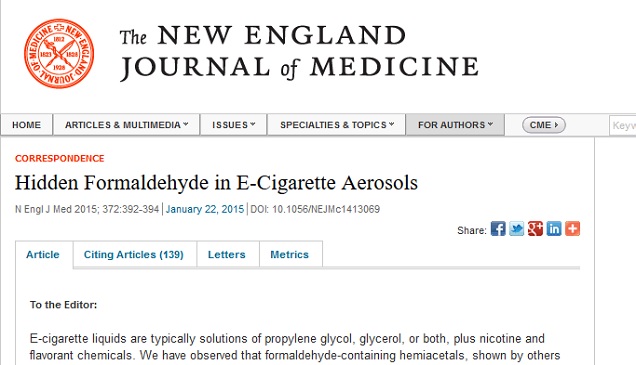
Most longer-term vapers or people who are aware of the controversy surrounding e-cigarettes will remember all of the concern a few years ago around formaldehyde. Some eager researchers detected large amounts of formaldehyde in e-cigarette vapor under specific conditions, the New England Journal of Medicine published their study and the international news media went into full panic mode. This led to many vapers being warned by well-meaning family members that maybe vaping wasn’t such a good idea after all, and on undoubtedly more than one occasion, led to scared vapers taking up smoking again.
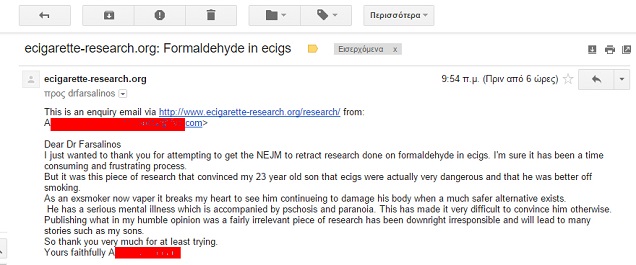
But the problems with the research were pointed out by vapers immediately. The researchers took a very early design for a clearomizer (long since obsolete) and cranked up the voltage to the maximum to produce the scary results. The problem with doing this is “dry puffs,” a phenomenon most vapers will be familiar with, in which the vapor gets “overcooked” and starts to taste god-awful as the wick material gets singed and the liquid is overheated to unrealistic levels. The “smoking robots” used to perform studies like this can’t see the problem, but any real-world user would. This has been convincingly demonstrated multiple times and the research has been thoroughly debunked.
It’s analogous to turning your toaster up to its maximum setting (imagining you’ve contracted amnesia and forgotten that almost every toaster in the world burns your bread at about 2/3 of the maximum setting), dropping some bread in and switching it on. Then you wait, and wait, until the blackened, inedible toast pops up. Then you grab your lab coat and fancy spectroscopy device and declare – egad – there are carcinogens in this inedible square of charcoal.
This is obviously useless for anybody in the real world, but when you do the same basic thing with a vaping device, you get worldwide media coverage instead of the derisive laughter you deserve.
The New Study: Turning the Toaster Up to 11
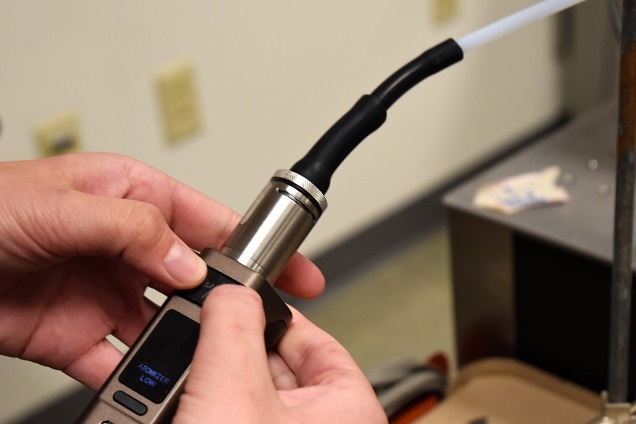
This is where the new study comes in. After pointing out that carbon monoxide (CO) is usually a result of incomplete combustion, they reference another study from earlier this year which claimed to have detected CO in e-cigarette vapor, and go on to describe their plan for the research.
Using a Wismec Reuleaux RX2 (up to 200 W of power) and an Aspire Cleito EXO with 0.2 ohm coil, they tested Vista Vapors’ Strawnana and Vapor’s Knoll’s Black Ice across a range of wattage settings, using a diode laser spectroscopy to detect carbon monoxide in the emitted vapor. The device was activated for a four-second puff, and both e-liquids had a 50/50 PG/VG ratio. They did go to some effort to try to avoid dry puffs: the coils were replaced whenever they noticed discoloration in the liquid or the wicking material, and after every measurement they left the device for four minutes so juice had the chance to soak in.
They also note that the “data collected during the initial puff after the coil [was] replaced was discarded.” This raises a couple of questions: why – what was the issue with the first measurement? And given that they mention leaving juice to soak in between measurements, did they allow juice to soak in prior to the first measurement?
The researchers reported an increase in CO level as the power setting on the device was increased, with the quantity being below the limit of detection for both juices at 40 W, and increasing with power up to a maximum value of 180 parts per million (ppm). This limit wasn’t really related to the device reaching a maximum CO production; it was due to the limitations of their equipment, which meant they couldn’t accurately pin down the number beyond that level. This graph shows the data:
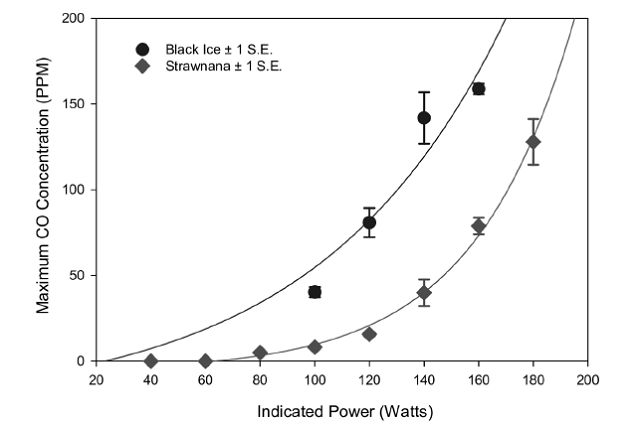
However, there are a couple of points that jump out right away. Firstly, they note that Black Ice had higher CO levels for all tested powers, except 40 W, where none was detected. But, given that the smooth curves are just to show the trend, it’s clear that only four data points are plotted for that flavor, vs. eight for Strawnana. The highest is likely because the result wasn’t quantifiable, but what happened at 60 and 80 W? But the second point is the most important, and links pretty closely with the missing data on this graph.
If you look up the Cleito 0.2 ohm coil, you can see it’s rated for about 55 to 70 W of power. This is literally printed on the coils. And here we return to the formaldehyde story, where the toaster is turned up well beyond a reasonable range and then people act like it’s a huge surprise when the toast comes out burnt. If you’ve ever used a vaping device at 200 W, it’s a pretty intense experience even if you have a coil that can cope with that level of power. The idea that you can go almost three times beyond the recommendation for a coil and expect performance representative of real-world use is absolutely laughable. In fact, it’s genuinely absurd.
From the graphs – looking at the actual data points, not the curve – you can see that the levels at up to 80 W were really very low, likely below 10 ppm. Detecting CO is never good, but the difference between these results and the ones at higher settings is huge, to say the least.
So, let’s put on our science hats and work out what happened here. We know that carbon monoxide is not one of the chemicals usually detected in e-cigarette vapor, and smokers who switch to vaping have carbon monoxide levels in line with those seen in non-smokers. This makes a lot of sense because there is no combustion.
OK, let’s drop the façade. Of course we all know what happened. When you run a coil at well beyond its recommended setting, for four seconds a puff, of course you’re going to run into problems. The carbon monoxide clearly resulted from the cotton wick burning under the extreme heat produced in this ridiculous study design. Simply put, at such monumentally high settings, the wick wouldn’t be able to replenish with liquid quickly enough to cope with the rate of vaporization during a single puff. Leaving time between puffs is a great idea, but when you’re talking about 200 W vaping for four solid seconds, that is far from the only issue.
Incidentally, this is why the “first puff” from a new coil results would have been very interesting to see. It’s also why the “discolored” wicks would have been interesting to see. Because in the real world, a coil will last you at least a week. If your experiment is burning through them in a few puffs, that’s a sure sign you are getting something embarrassingly wrong.
And if you're wondering why the other study found the same thing, it's (shockingly) because they made exactly the same mistake. You can read that here.
The Big Problem: Researchers Still Don’t Understand Vaping
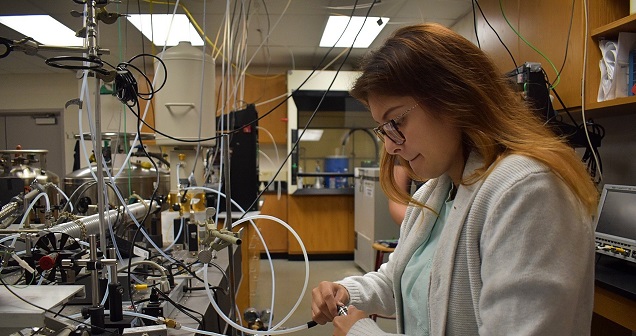
We’ve spoken about vaping researchers not understanding vaping before, but this is really something else. They ignored the information printed on the coils they used, and again ran into a rookie-level mistake that literally any single vaper on the street could have warned them about. These researchers clearly tried, and were aware of the problems with dry puffs (they mention it in the paper), but they were still ultimately clueless about what they were actually doing. And that isn’t even the most annoying thing: it’s their refusal to admit that they didn’t know what they were doing and seek actual advice from somebody who understands vaping even to a passing degree.
They even suggest that: “Vaping device manufacturers should also consider limiting the range of power available on their devices.” Because of course, Wismec needs to consider the limitations of Aspire’s coils when it makes its vaping devices. This is a fundamental misunderstanding of the whole nature of the technology. It’s designed so you can use a tank from one manufacturer with a mod from another, and there are tons of tanks with different coils on the market. The request is literally impossible to fulfill unless they set the maximum at 10 W or something else uselessly-low, and even then some jumped-up dipshit of a researcher would undoubtedly find an obsolete coil from 2010 and try it at the maximum setting.
Don’t get me wrong: vaping is complicated, especially compared to smoking, and it does depend on the user learning a little bit about what they’re doing. But it’s still utterly unacceptable to conduct research on something when you clearly have so little understanding of what you’re doing. It could be a malicious attempt to paint vaping in a bad light, but as Hanlon’s Razor suggests, stupidity and/or ignorance is the most likely explanation.
So Should I Worry About Carbon Monoxide When I’m Vaping?
The short answer is no. If you look at the graphs for the recommended power settings for the coil, or results from people who’ve switched to vaping, it’s clear there is very little to be concerned about, if anything. When you’re using CO levels in people’s breath to test their smoking status, 9 ppm or lower is generally taken to show that they’re a non-smoker. The highest data point on the graph within the usable range for the coil is likely lower than this. In other words: the most you’d be exposed to from vaping in realistic situations is less carbon monoxide than you’d find in the breath of a non-smoker or from the ordinary air in a large city.
You should absolutely stick to the recommendations for the coil you’re using (especially if you’re trying to get some results published in a scientific journal), but in practice, carbon monoxide in e-cigarette vapor isn’t a realistic issue. If you can quit vaping, great, but all of the evidence suggests that even if we do inhale a little bit, it’s much less than you’d inhale as a smoker.

